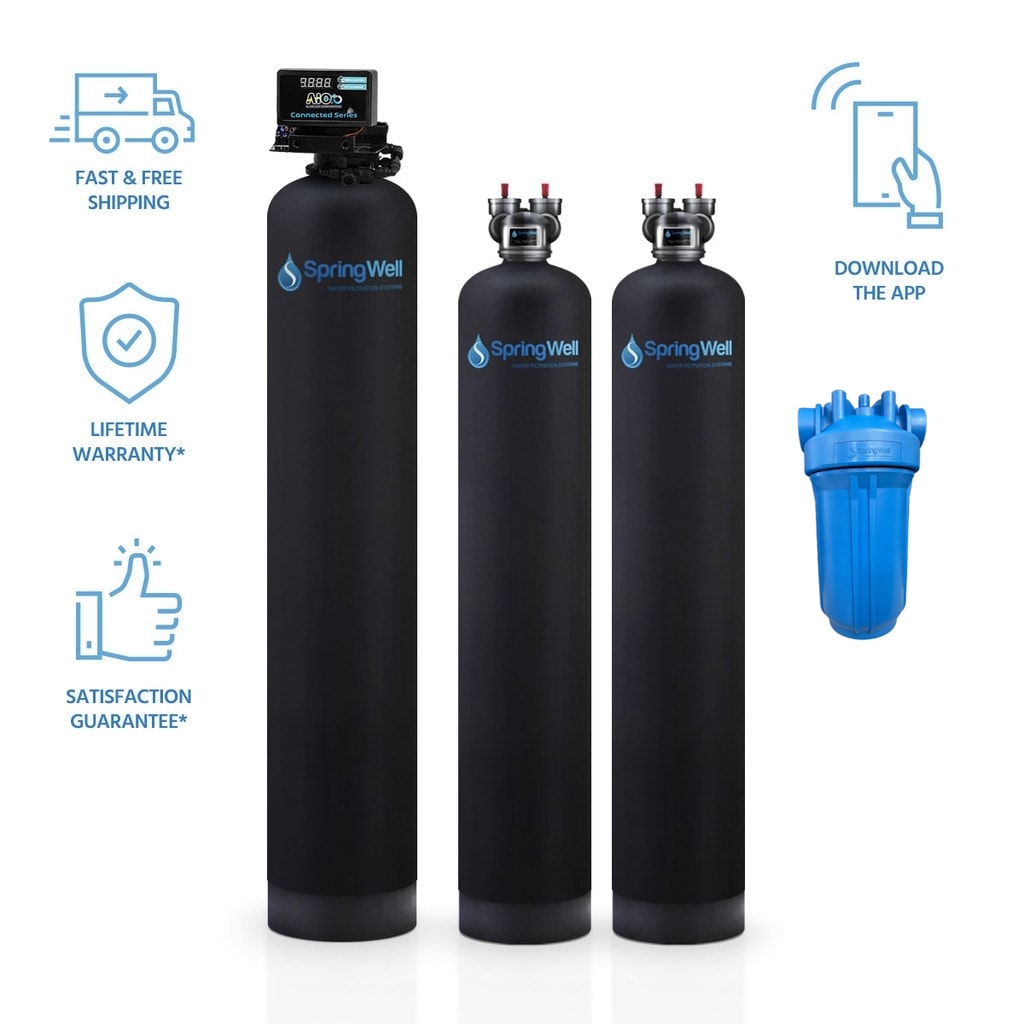Table Of Content

In our review, the type of stages or filtration included with the filtration system was analyzed and scored against other systems with similar abilities. The carbon filter has a lifespan of five years on average, but the pre-filter needs more frequent changing, usually every six to nine months. The filter does need changing every three months and is only NSF/ANSI Standard 42 certified. This filtration system will not remove harsh chemicals but it will get rid of sediment. Aquasana whole house filters tend to cost in excess of $2,000, so it’s quite the investment. The 904 model has NSF/ANSI standard 42 certification, which is the lowest certification level, which isn’t necessarily a bad thing.
The Best Reverse Osmosis Systems for Water Filtration at Home
Choose a company that provides an iron-clad warranty and generous return policy when purchasing a water filtration system. Make sure to read the terms of service before buying to ensure that all parts are covered. Typically, most systems necessitate filter replacement every 6 to 12 months. However, making a slightly larger upfront investment may help minimize or even eliminate these annual expenses.
Air or Chemical Injection Filters
Otherwise, do a test run with spare materials or ask a competent family member or friend to help. If you don’t have push fittings and your home has copper pipes, you’ll need to attach two pipes by soldering, then connect the inlet and outlet ports to these pipes. Connect the unit’s inlet valve, then the outlet valve, to the main water line.
How much does it cost to install a whole house water filtration system?
Whenever you change the UV lamp, insert the key into the side of the controller. Each time you get a new Neo-Pure UV lamp, you get a new key to signal the controller once it is time for a replacement. The Water Quality Association (WQA) is the leading accredited agency for testing and certifying water to NSF/ANSI standards. Typical NSF/ANSI certification standards include NSF/ANSI 42, 44, 53, 55, 58, 401, 244, and 231. Well water is a grab bag – there could be just about anything in there depending on where you’re located.
HANDY GUIDE: Water filtration systems for the home - The Florida Times-Union
HANDY GUIDE: Water filtration systems for the home.
Posted: Thu, 02 Dec 2021 08:22:59 GMT [source]
✅ Specific Well Water Filtration System Buying Guides
While it’s effectiveness and efficiency are huge upsides, the #1 selling point for me on the SpringWell SS1 is its lifetime warranty. And after spending all this time choosing and installing a water softener, the last thing you want is to waste all your effort on a unit that’s just going to end up in a landfill before the next presidential election. Some whole-house filtration systems have 7 GPM, while others go up to 15 or 20 GPM. A home may require a certain flow rate, so this is worth checking into when looking for the best well water filtration system.
Because they’re a financial investment, it’s important that you not only determine if installing one is truly necessary, but also that you find the best whole house water filter for your home, budget, and environment. Keep in mind that this advanced granular activated carbon filter does not filter sediment or bacteria. You install this whole house filter by locating a horizontal pipe near your shut off valve, cut into it with a pipe cutter, and attach the filter using tools provided. Whether you’re worried about the quality of your water source or you’re using one as a precaution, installing a whole house water filter helps make consuming water worry-free. However, the reason isn’t often because the plumbing is more complex, but correctly setting up the filtration requires additional system knowledge. SoftPro’s water filter will remove 99% of contaminants along with many other impurities using its catalytic carbon filter, which also eliminates minute metal materials and chloramine.
#1 SpringWell WS Whole House Well Water Filter — Best Overall
Each whole-house filter cartridge lasts for up to 3 months, improving the quality, odor, and taste of the home’s drinking water. A whole-house filtration system provides enhanced water quality for better tasting and smelling drinking water, and prevents harmful minerals and toxins from polluting your cleaning and drinking water supply. Selections for the best options available depended upon the type, flow rate, filtration, compatibility with household water systems, the longevity of the filter’s cartridges, and ease of installation.
Aquasana Whole-House Well Water Filter System
5 Best Whole House Water Filter Systems of 2021 - Washingtonian
5 Best Whole House Water Filter Systems of 2021.
Posted: Mon, 26 Apr 2021 04:12:20 GMT [source]
I have offered recommendations for both of these filter types at the beginning of this review. Of course, this increases the up-front cost of your water system, but it will save you in the long run because your RO filter will last longer. This will deliver clean drinking water to a dedicated faucet in your home that connects directly to the filter’s storage tank. Whole-house reverse osmosis systems do exist, but they take up tons of space and are quite expensive, both up front and in the long run.
Pentair Water Solutions Water Filter & Pelican Water Softener Alternative Combo System Model #PSE1800-P
How you install a whole house water filter system depends on what kind of treatment your water needs. Like most well water systems, the Dill family needed sediment filtration to remove heavy debris and UV purification with an inline prefilter to remove small particles and deactivate living organisms. The family's water was also acidic, so we used an up-flow filter system with calcite media to raise the pH.
In city water, chlorine is a big issue because it’s added to the water at the treatment facility, which makes it safe to drink but also affects the taste and smell of the water. OR…If you want to dive even deeper into this filter, check out my full review of the SpringWell WS1. In this article, I talk even more about the technology behind the dual-filtration design and also share additional insights on the warranty and installation process. It was designed to remove iron, sulfur, and manganese from water, and it does a superb job at this.
Filtering coliform bacteria from well water is essential, as their presence can indicate the potential for harmful fecal bacteria. While RO and carbon filters can address coliforms, they may not fully safeguard against microorganisms like E. After all our hard work, countless reviews, and some real hands-on time with these systems, we’re genuinely excited to share our top picks for well water filtration. Culligan’s whole house well water filtration system tackles the toughest sediment problems, removing dirt, sand, rust and silt particles from 1–50 microns depending on the size cartridge you choose. Express Water’s triple-stage whole house water filtration system for well water captures more than 80 contaminants from well water with ease. No filter housing will be OK if you get a solid freeze-but I assume you know that.

Whole house filters cost anywhere from $80, like our pick for best budget, the GE Whole House Water Filtration System. Others, however, like the Aquasana Whole House Well Water Filter System, can cost a couple thousand dollars. If your water is showing high chlorine levels—and is tasting or smelling strange as a result—the AO Smith Whole House Water Filter System is our choice for chlorine removal. This filter has an exterior made of stainless steel, so it resists rust and corrosion, prolonging the life of your filter.
I’m out in the country with a well and this helps the water taste better,” writes five-star reviewer, Jennifer M. Other well water contaminants include tannins, naturally occurring fluoride, arsenic, and other heavy metals, and much, much more. Well water can sometimes also have a very low pH, which means it’s acidic and must be neutralized in order to drink. If you’re new to the world of residential water filtration, let me introduce you to Johnny Pujol, a water quality engineer at Tap Score, one of our trusted partners. When we review products, we spend time calculating the overall cost of ownership of each product. This includes energy use, replacement filter media, maintenance costs, etc.
A whole house water filter system works to keep contaminants out of your water while removing sediment, bad odors and taste. It typically connects to your main water supply and filters out chlorine and other chemicals. Some filter systems include water softeners to reduce the impact of hard water. The whole-house water filter also includes a salt-free water softener that coats any heavy metals to prevent them from binding to water pipes, faucets, and other plumbing fixtures.
Even homes with new plumbing can benefit from a whole-house water filter. This ensures that the water is properly filtered, but that it’s also treated with salt molecules, which bind to hard metals and render them inert. Removing these minerals from hard water is integral to maintaining the durability of the pipes, faucets, and hot water tank. Users who don’t want to add salt to their whole-house filter system can get a salt-free softener that coats the hard metal particles to prevent them from sticking to the plumbing infrastructure. Installing whole-house water filter systems isn’t as easy as putting in a faucet filter.
Other systems come with DIY installation instructions and kits to make it easier to do on your own. While technically not a filter because nothing is removed, UV light kills microorganisms like bacteria, viruses, and protozoa instead by damaging them with ionizing radiation. The intensity of the light source corresponds to its effectiveness, and UV light systems have the potential to kill over 99.9% of microorganisms in your drinking water. Air injection (AIO) uses a pump to inject air into the water, which oxidizes iron, manganese, and hydrogen sulfide.

No comments:
Post a Comment